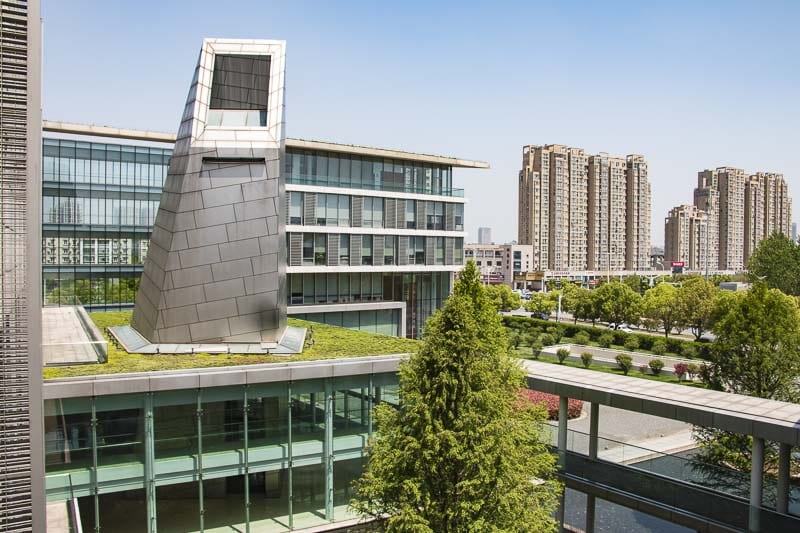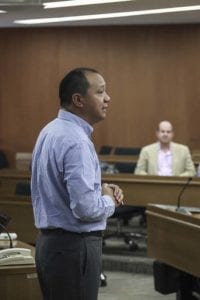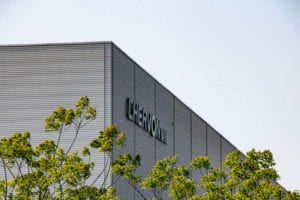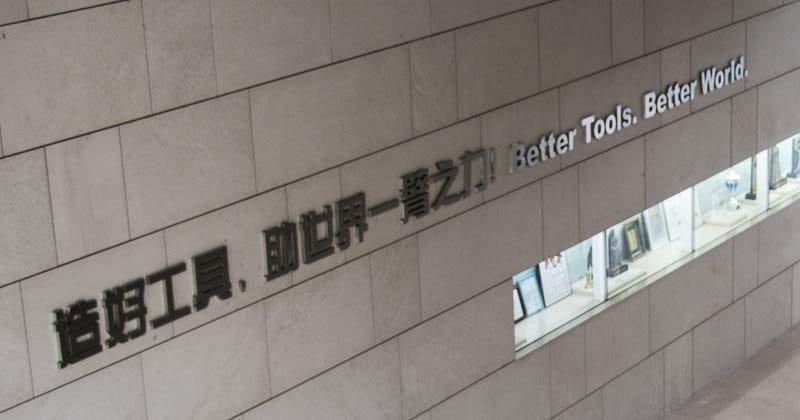There’s a lot of confusion surrounding any manufacturing in China, and where there’s confusion, there are also misconceptions. To clear up some of this, we wanted to understand a bit more about the history of Chervon. Chervon, based on China with facilities worldwide, manufactures power tools internationally. They have manufacturing plants in Nanjing, China as well as Stuttgart, Germany. They also have sales and marketing offices all over the US, Europe, Australia, Germany, and China.
A few years ago, we got a chance to fly to Nanjing, China for a visit.
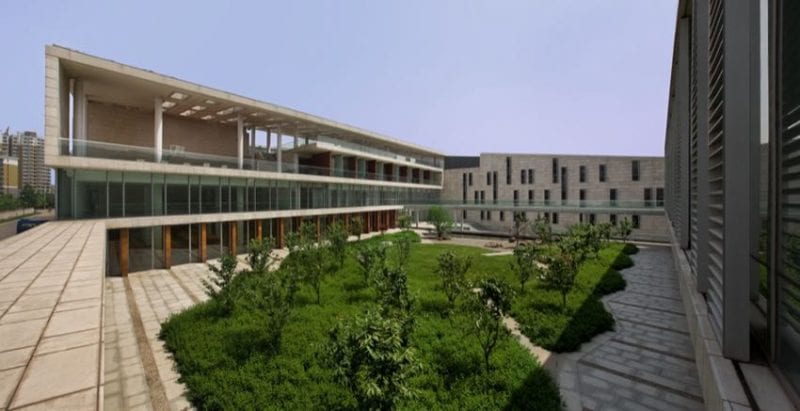
History of Chervon Manufacturing
We were afforded the opportunity to spend a couple of days seeing their manufacturing facilities in Nanjing, China. There, we got a clearer picture of not only their capabilities but Chervon’s particular style of running its international operations. After our visit, we received more than just a history of Chervon manufacturing, we learned about overseas OEM and ODM manufacturing as a whole.
We also got a much more personal look at a company that’s trying to do it right—both in terms of process and also the environment. That’s a lot to swallow, and so we’ve got more than one article on the company and its processes. This article introduces this China-based international power tool manufacturer and what we’ve come to understand about them.
What’s in a Name?
Shakespeare made famous the line “What’s in a name?” when he composed Romeo and Juliet. Indeed, that story centered around a conflicting tale of two cultures that were destined to collide. The name “Chervon” means Spring and The Mountain. The building itself demonstrates a sort of feng shui, and Ralph Johnson, a Chicago architect designed the current R&D building. After listening to company president Peter Pan discuss the meaning and passion of the company he created, he came up with the design.
Chervon Research and Development Building
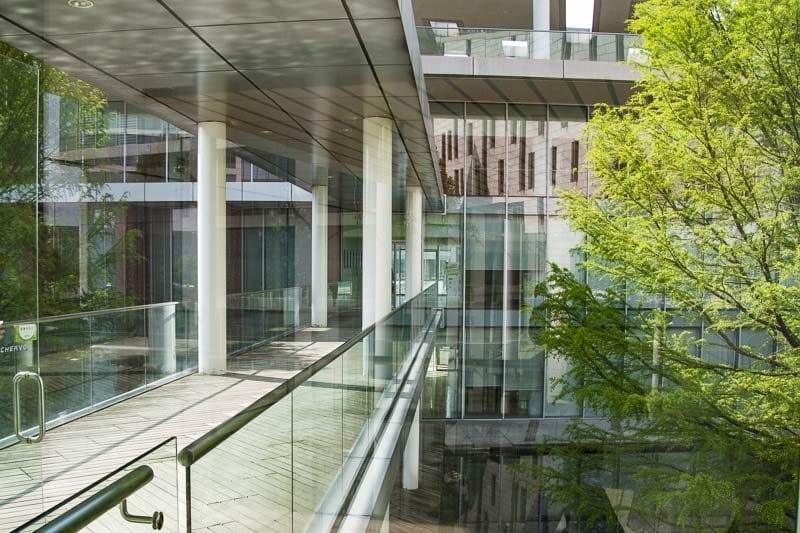
The Chervon R&D building has many beautiful areas that all employees are allowed to enjoy (as opposed to just the senior staff and management). This includes a full greened rooftop, a central pyramidical spire that culminates in a waterfall and terminates in an indoor fountain, and a running track and basketball court near the top floor.
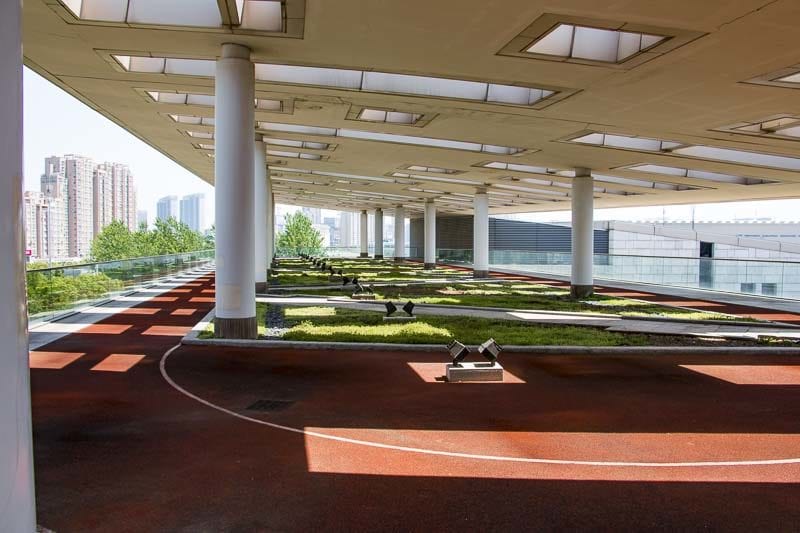
History of Chervon Manufacturing in China
Shanghai built most of its skyscrapers in just the last 20 years. We found that amazing given the vast number of them and the almost limitless skyline present in the city. Chervon itself was also built within the past 23 years and has experienced an almost similar level of explosive growth. In a sense, it mimics the sudden and explosive growth experienced by the entire country. China’s real economy is more capitalist now than communist. This allows for the vast manufacturing capabilities it possesses. In 1978, the Chinese leadership opened up the government and people to this new style of living, and so far, it hasn’t looked back.
The people of China are now able to attend university and progress from one place to another. Peter’s first job was in a state-owned trading company. After 5 years or so, he realized the system wasn’t optimized for producing the best results and products that were up to the level of his aspirations. This being the case, Peter, Stephanie, and Joey (no longer with Chervon) left the state-owned company and formed their own company. Chervon itself was literally started with a dream, some borrowed money, and two hotel rooms. It all quickly grew from there.
Why Can’t We Do It This Way?
Asking the question “Why can’t we do it this way?”, describes a lot of the history of Chervon. By doing this repeatedly, the company was able to focus on doing the work of power tool manufacturing better and more efficiently. As China began building itself up from almost nothing, Chervon paralleled this in its own development. They grew little by little as a trading business (buying and selling components and products).
Introducing Quality Controls
After 3-4 years, they recognized a need to remove some of the bottlenecks by doing more of the processes on their own. Chervon became one of the first companies to begin a quality control process. Until then, quality control (QC) consisted of asking “Is the machine running? Good.”
Chervon decided to do its own testing. They made investments into the tools needed to test their products. That led to them being able to learn how to locate problems, but they still had to rely on the factories to solve them. Shortly after this, they began hiring teams of people to focus on R&D and to design specific machines.
The Start of Chervon Manufacturing
This growth from machine and component sourcing to problem-solving led Chervon to begin manufacturing in 1997. Other companies thought it would be impossible for a parts sourcing company to delve into actually making its own products. Even so, Chervon managed to maintain many of its current business relationships while manufacturing its own high-end products.
This all occurred in the midst of a time when Chinese products were increasingly thought of as being “cheap”. They certainly lacked a reputation for quality. Again, step by step, Chervon grew their capabilities.
By 2000, the company made many of their own products and did it better than many other manufacturers. Chervon now holds a spot as one of the top 10 manufacturers of power tools in the world. Their products are sold by over 30,000 stores in 65 countries. Chervon manufactures products for several well-known manufacturing brands as well as their own house brands: EGO and Devon. Not bad for a company that’s only been around since 1993.
Chervon OEM and ODM Manufacturing
Throughout the history of Chervon, the company manufactured plenty of OEM products. They also do quite a lot of ODM manufacturing as well. That includes manufacturing for popular brands sold in Lowe’s, The Home Depot, and Menards. Simultaneously, Chervon is keen to make their own brands. They have a particular interest and excitement about selling their own products to Chinese people in their own country. This actually brought about the Devon line of tools.
OEM vs ODM Manufacturing – What’s the Difference?
To understand the difference between OEM and ODM manufacturing you need to understand who’s calling the shots on design. An OEM brings a finished design and collaborates on the engineering. They determine all design and product specifications. The brand then buys it from the OEM manufacturer and sells it to the market themselves. An ODM manufacturer actually builds a product for another company or brand and does so using their design specifications. Another way to look at it is that an OEM manufacturer shops around an already excellent product. An ODM manufacturer more or less serves as the workhorse to bring a product idea to life for another company. Being an OEM and ODM manufacturing partner requires a lot of attention to detail. It also requires a very specific set of skills that will make or break a company.
Moving Into the OPE Market with the EGO Brand
The level of manufacturing Chervon engages in is commensurate with Bosch, Makita, and Milwaukee. In fact, they’ve made tools for some of those companies at one point or another as an OEM manufacturer. Tool manufacturing in China is a 1.2 billion dollar market. The OPE (outdoor power equipment) sector is currently dominated by the European and American markets.
This is where Chervon has really stepped up its game in the past few years. The company has quickly gained recognition in business-to-business markets. Now, it has turned its sights on name recognition in the consumer market. Three years ago, Chervon acquired Flex, a German power tool company. In 2014 they debuted the EGO 56V cordless OPE line of tools and a strong move into outdoor power equipment.
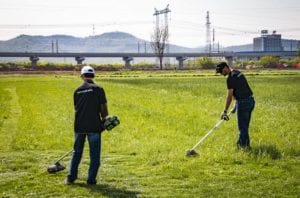
From ODM to OPE
The EGO name and brand stands for the move into OPE which is driven by engines and connecting those to applications for lawnmowers and handheld OPE power tools. As Chervon looked for growth areas, they recognized OPE had different manufactures. They weren’t making use of some of the strengths and advantages found in the cordless power tool industry. When Chervon, the largest ODM manufacturer in the power tool industry took a look at the OPE market, they saw a great opportunity. More than just the financial and manufacturing opportunities, Chervon saw an opportunity to bring about some of the environmental advantages cordless OPE technology would offer to the world in general.
The EGO brand was really Chervon’s big move into a self-branded suite of power tools. Other companies express an interest in replacing corded tools. Peter Pan, Chervon president, truly believes lithium-ion can, one day, almost entirely replace the gasoline engine. Based on how well the EGO Powerload 15-inch string trimmer and EGO Select Cut lawnmower are doing, it looks like tools once thought to require gas are well on their way to becoming battery-driven mainstream solutions.
Chervon and the Environment
The R&D building where we began our time at Chervon, is a complete green roof building. When Peter saw China move from poverty to wealth he also saw the country begin to generate massive pollution. This lack of balance bothered him. It drove him to take the more difficult route that might require more money and effort. The Chervon R&D building is an environmental wonder.
A lot of what is being done is more for the long-term benefit and good towards the environment than short-term cost savings—or even the visible effects it produces. The green roof, for example, cannot really be seen from the ground unless you catch it at just the right angle. Chervon feels that the production of oxygen and long-term energy savings was still well worth the effort. Many of the plants across the entire facility come from Germany, so they are expensive—but only from a one-time investment perspective. Over the long haul, there are savings in heat reflection. This saves energy in the summer and also warms the building in the winter.

